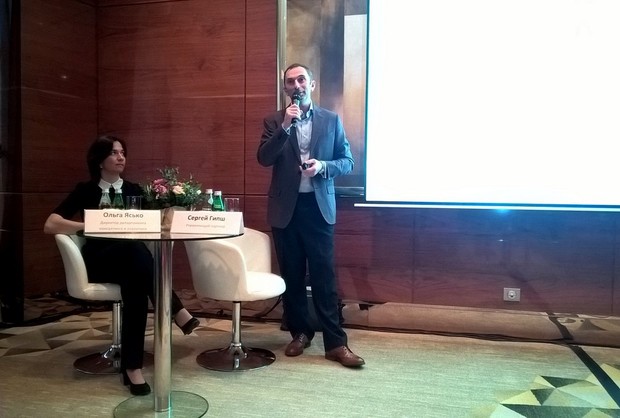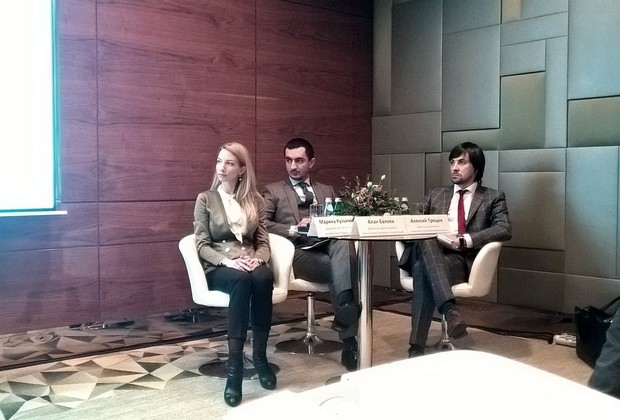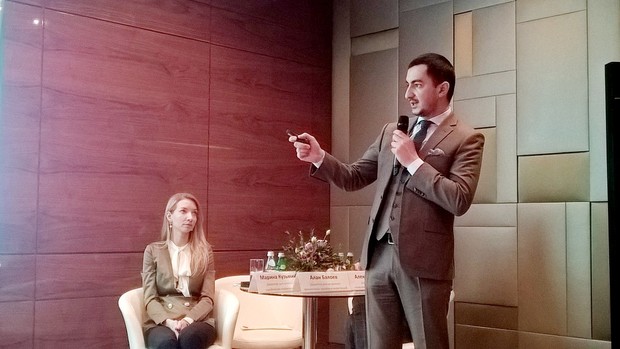The rich also cry:losses due to Arab Spring and the threat of Trump
The annual report on wealth distribution in the world has been published. Survival and retention of capital is the main trend identified in the study. According to the report, the main threat to wealth in the next five years is political instability. The correspondent of Realnoe Vremya visited the presentation The Wealth Report.
Who are ultra-high-net-worth individuals (UHNWIs)
Every year the consulting company Knight Frank publishes The Wealth Report — the report on general trends in the real estate market in the highest price segment, the global economic market and the investment behavior of the so-called ultra-high-net-worth individuals (UHNWIs) (people with capital of more than $30 million – editor's note).
In the results of 2016, which have recently been presented at the special presentation in Moscow, the company has paid special attention to the effects of economic and political shocks in Russia and in other countries, affeced the capital of individuals and the budgets of entire states. About how the rich people live, what is the volume of Russian investments in Asian real estate and what percentage of Russia's population owns 60% of the state of the country — in the material of Realnoe Vremya.
The Arab Spring has cost $600 billion to the Middle East
In order to present The Wealth Report 2017, or the report on the distribution of wealth and economic trends in the world, in the the Lotte hotel in Moscow on Novinsky Boulevard there gathered the top management of the Russian branch of company Knight Frank — the managing partner Sergey Gipsh and directors of departments Olga Yasko, Marina Shalaeva, Alan Badoev and Aleksey Treshchev. The whole presentation was divided among themselves so that each spoke about aspect of the study.
According to Sergey Gipsh, who took the floor first, the report is a fair reflection of ''lifestyles of the rich people, which usually is judged by gossips'': where they invest, what they are afraid of, where they countries to emigrate and why. In his speech, however, Gipsh focused on the overall global trends and risks for business.

So, among the major trends he called the desire to preserve existing capital and not fir further accumulation, and the desire of businesses to ensure personal safety — ''survival and retention''. The main risk for the capital is the political risks, about which 73% of respondents worldwide of wealthy people reported.
''The report describes global markets and the political instability that we are seeing actually everywhere: the Middle East — the Arab Spring, costing the countries more than $600 billion, and a terrible year for Turkey; in Asia, a hotbed of tension remains North Korea; if we look at Europe, the most significant event and the main instability in Europe is, of course, Brexit and the growth of right forces; the United States — the election of the President of the United States, leaving much uncertainty about how America will behave,'' said in his speech Gipsh.
The second danger is the volatility in emerging markets, the slowdown in economic growth and, as a consequence, the fall in the value of assets.
62% of the total wealth of Russians is in the hands of 0.1% of the population
In 2016, two thousand dollar millionaires left Russia, this is the sixth indicator for migration of wealthy people in the world (France leads with ten thousands of emigrants). In this case, those of 132.000 millionaires (0.1% of the population), who left hold in their hands 62% of the total wealth of the Russians. This ratio, at the request of Realnoe Vremya, was commented by Olga Yasko, Director of Department of consulting and Analytics Knight Frank, a speaker at the presentation: ''This figure is not terrible or should I say, bad. It is not good that we have in the country, we are actually missing a middle class. We have very rich people, who make up a very small percentage of the population, and there is the rest — that's a problem.''

This is confirmed by the figures of the report: by the number of UHNWIs (2 750) Russia is the 12th in the world, and their number in our country over the past year increased by 10%. However, if you look at the percentage of UHNWIs and the population, it would appear that on 10.000 inhabitants of the country accounts for only 0.2 of a wealthy person — the same situation is in Poland, Saudi Arabia, Turkey and Uruguay.
According to Alan Badoev, Director of financial markets and investments, as a rule, UHNWIs invest in their own business (33%) and in securities and precious metals (29%). In real estate, typically funds invest: up to 92% of investment account just for them. By a wide margin in attracting investments, the residential real estate is in the lead, almost two and a half times higher than the payments in office and retail properties.
Unlike foreign countries, much attention of Russian investors are paying to the health care and renewable energy: up to 25% of UHNWIs invest in such facilities. They invest mainly in the European countries (93% of respondents), Russia and the CIS countries (71%), and despite the reversal of the foreign countries in direction to Asia, Russians almost do not invest in the Asian real estate (0%). For the Russian real estate 2016 was successful: the volume of investments increased by 40%, although the proportion of foreign investors fell by almost two times.

Elite housing is Russia is becoming cheaper
The cost of the elite housing in Russia in 2016 fell to an average of 5.5%, the highest drop among major economic areas (for comparison: in the Middle East, the price fell by 3.3%, in Australia increased by 11.4%). Marina Shalaeva, Director of the international real estate department, and Aleksey Treshchev, Director of the department of town and country real estate, spoke about this.
The cost per square meter in Moscow fell by 11.2%, and the capital of Russia is not alone in this negative trend: due to Brexit, London has become ''cheaper'' (-6,3%), the most popular among UHNWIs city for purchasing property. But the Chinese Shanghai, Beijing and Guangzhou showed substantial growth in value: the average price of housing in each of them increased by 27%.
As for predictions for the future, according to experts, by 2026 the number of UHNWIs in Russia will increase by 60%, and according to this indicator, Russia is the third by the prospect and existing expectations of the country, more growth is expected in Asia and Australasia (Australia, New Zealand and the Pacific Islands — editor's note).